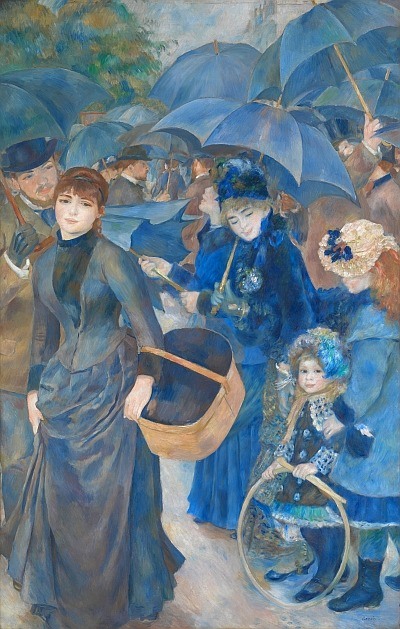by Thomas O’Dwyer

The first real work of art I ever saw was Auguste Renoir’s Les Parapluies. I was a teenager, and the painting had arrived in Dublin following a 1959 agreement between the governments of Ireland and Britain. This they had signed to solve an arts wrangle as tortuous as the Greek Elgin Marbles saga. The Renoir was part of a collection bequeathed to Ireland by Sir Hugh Lane. A Cork-born art collector, Lane died on board the Lusitania, which a German torpedo sank off the coast of Ireland in 1915. His collection of 39 paintings include works by Manet, Monet, Pissarro, Renoir, Morisot, and Degas. He had first left his collection to London’s National Gallery, but it was later found that he had attached a codicil to the will. It stated that he had changed his mind and wanted his paintings to stay in Dublin. The addendum was signed but not witnessed, and the London gallery declared legal ownership.
The dispute roused Irish nationalist passions, already at fever point in the fight for independence. Hugh Lane’s aunt was Lady Gregory, a patron of W.B. Yeats. They led Ireland’s cultural elites in a campaign to honour Lane’s last wishes. The governments renegotiated the 1959 agreement in 1993, and it comes up for renewal again this year. The new accord divided the paintings into two groups. London restored 31 of the pictures to Dublin, and every six years the cities trade the remaining eight, Les Parapluies among them. Read more »
